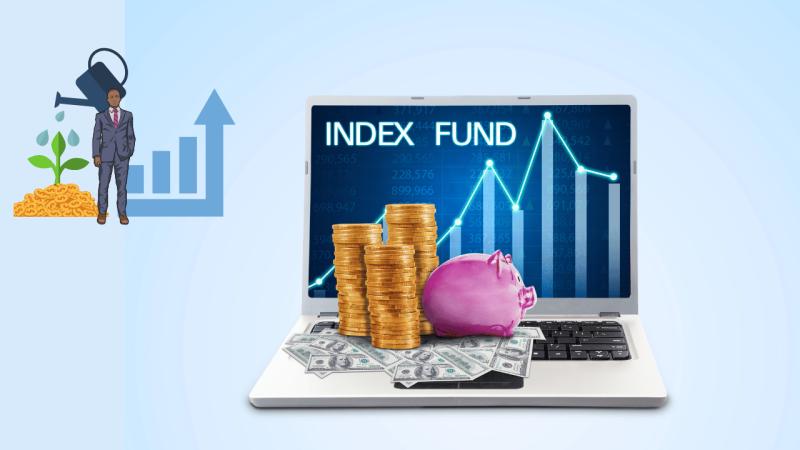How to Invest in Index Funds?

Investing in index funds has become a popular strategy for building wealth, especially among long-term investors. Known for their simplicity, low cost, and consistent performance, index funds are an effective tool for those looking to grow their money steadily over time. In this guide, we’ll walk you through what index funds are, how they work, and how to invest in them effectively.
What Are Index Funds?
An index fund is a type of mutual fund or exchange-traded fund (ETF) designed to mirror the performance of a specific stock market index. Popular indices include the S&P 500, Nasdaq Composite, and Russell 2000. These indices represent a broad segment of the market, allowing investors to diversify their portfolios by investing in multiple companies across sectors.
For example, an S&P 500 index fund holds shares from the 500 largest publicly traded companies in the U.S., providing exposure to a large portion of the U.S. economy.
Why Choose Index Funds?
Index funds offer several advantages:
- Low Fees: Since they are passively managed, index funds typically have lower fees compared to actively managed funds.
- Diversification: By investing in an index fund, you spread your money across multiple companies, reducing risk.
- Long-Term Performance: Historically, broad index funds have delivered steady growth over the long term.
How to Invest in Index Funds
1. Define Your Investment Goals
Before investing, ask yourself: what do you want your money to achieve? Are you saving for retirement, a down payment, or long-term wealth accumulation? Your goals will help determine which index fund suits your needs.
2. Research Different Index Funds
Not all index funds are created equal. Some track large-cap companies like the S&P 500, while others focus on small-cap stocks, international markets, or specific sectors like technology or healthcare. Some common categories include:
- Large-Cap Funds: Focus on large, established companies (e.g., S&P 500).
- Small- or Mid-Cap Funds: Target smaller or mid-sized companies.
- Sector-Specific Funds: Invest in sectors like tech or healthcare.
- International Funds: Offer exposure to foreign markets.
- Bond Funds: Track the performance of bond indices.
Warren Buffett famously advises that for most investors, a broad market index fund like the S&P 500 is sufficient for diversification and long-term growth.
3. Consider Costs
Even though index funds have lower fees compared to actively managed funds, it’s important to look at the expense ratio—the annual fee that covers the fund’s operating costs. Even a slight difference in fees can impact your long-term returns.
For example, a fund tracking the S&P 500 may have expense ratios ranging from 0.03% to 0.10%. Choose a fund with the lowest possible costs to maximize your returns.
4. Choose Where to Buy Index Funds
You can purchase index funds through:
- Brokerage Firms: Many offer a variety of funds, often with low or no commissions for ETFs.
- Mutual Fund Companies: Firms like Vanguard or Fidelity may offer their own index funds directly. When choosing where to buy, consider the available fund options, convenience, and whether there are transaction fees involved.
5. Open an Investment Account
To purchase index funds, you’ll need an investment account. This could be:
- Brokerage Account: Suitable for general investing.
- Retirement Account: Such as an IRA or Roth IRA, which offers tax benefits. Once you’ve opened and funded your account, you’re ready to buy shares of your chosen index fund.
6. Monitor and Rebalance
Index funds are often "set it and forget it" investments, but it’s still important to periodically review your portfolio. Over time, certain sectors or companies may perform better than others, potentially shifting the balance of your investments. Rebalancing your portfolio ensures you maintain your target allocation and risk tolerance.
Benefits of Index Funds
- Cost Efficiency: Low fees make index funds cost-effective, allowing more of your money to be invested rather than spent on management costs.
- Diversification: Owning shares in hundreds or thousands of companies provides broad market exposure and reduces risk.
- Performance: Over the long term, index funds often outperform actively managed funds, making them ideal for retirement savings and other long-term goals.
Potential Drawbacks
While index funds offer many advantages, they aren’t without risks:
- Market Risk: Since index funds mirror the market, they are subject to market downturns. If the market drops, so does your investment.
- No Flexibility: Index funds follow a set group of companies, which means you won’t be able to capitalize on outperforming individual stocks.
Conclusion
Investing in index funds is a smart and simple way to build wealth over time. With low fees, broad diversification, and minimal hands-on management, they’re an ideal choice for both beginner and experienced investors. By understanding your financial goals and carefully selecting funds that match your risk tolerance, you can create a solid investment strategy that aligns with your long-term objectives.





Comments